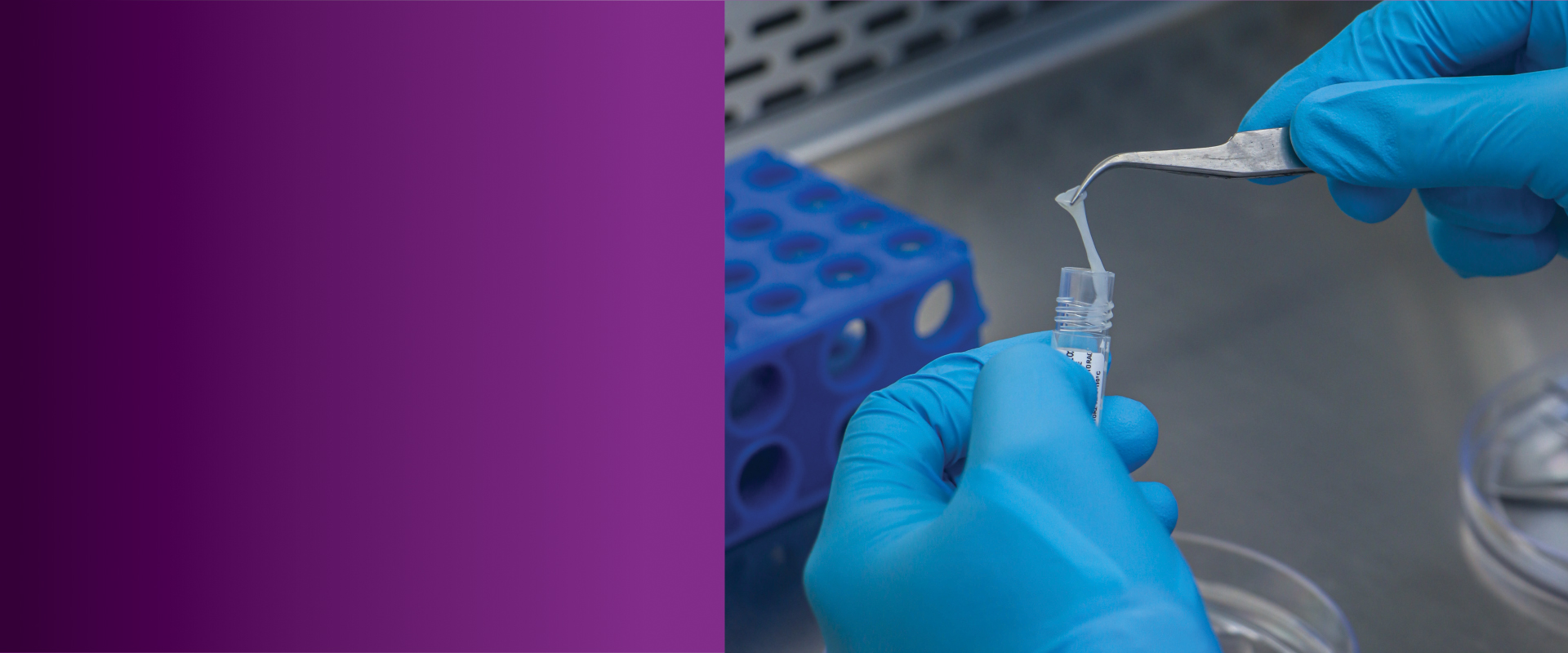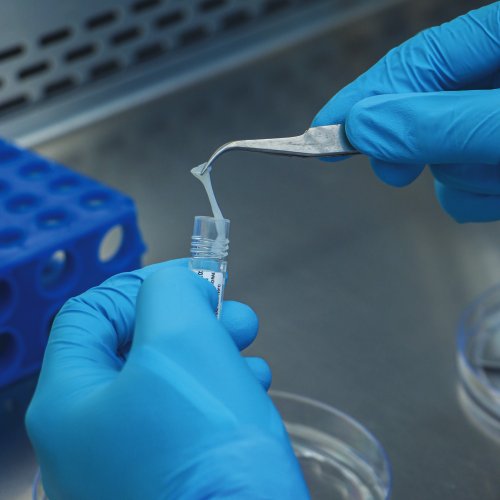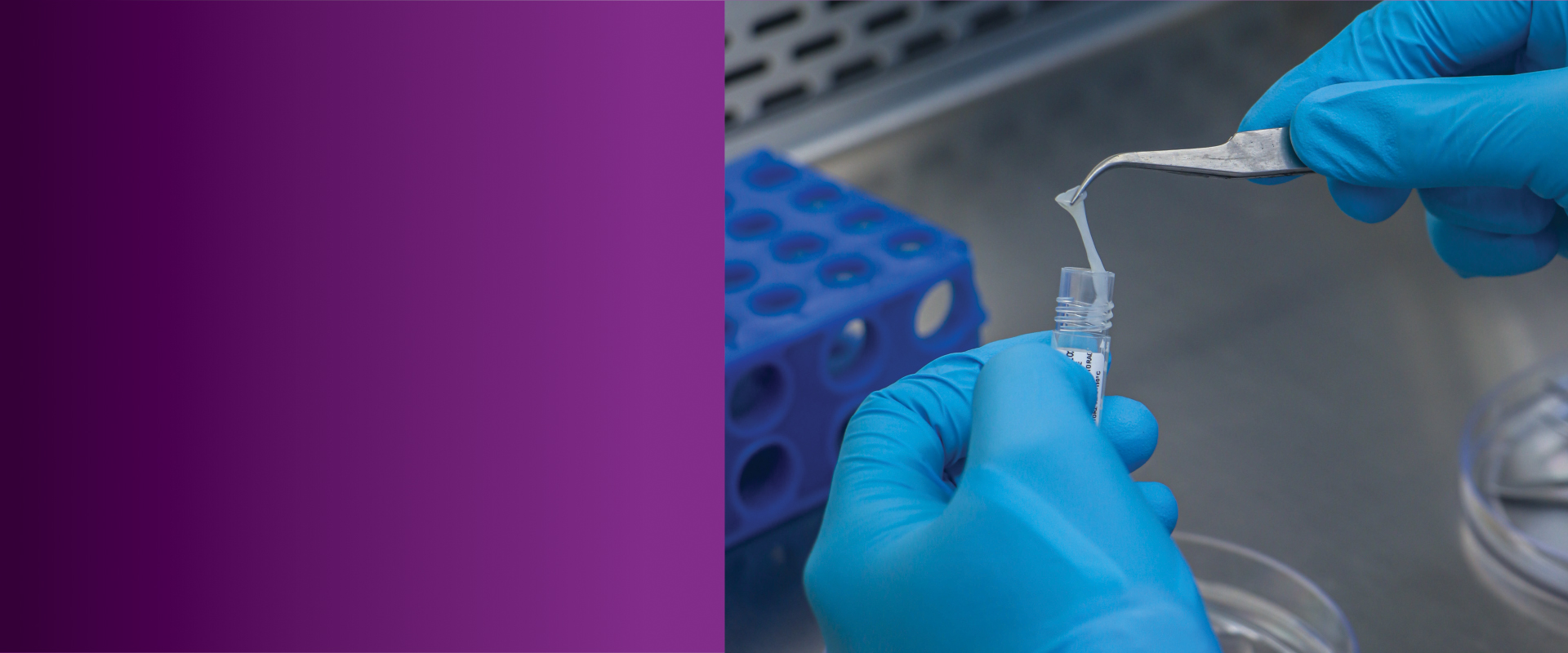WHAT EXACTLY IS CORD LINING?
The umbilical cord lining is a part of the umbilical cord that is rich in different types of stem cells primarily mesenchymal stem cells, known for their regenerative properties. These cells could be vital for future medical treatments, offering a unique opportunity for preserving health.
ALL ABOUT CORD BLOOD LINING
- Source and Collection: Stem cells are harvested from various sources, including bone marrow, peripheral blood, adipose tissue, umbilical cord blood, and tissue.
- Processing: Involves isolating and testing the stem cells from collected specimens.
- Application: Used in medical treatments for regenerative therapies and transplants.test1
- Versatility: Can develop into different cell types, offering treatment options for various diseases.
- Regenerative Ability: Vital for repairing and rejuvenating damaged tissues and organs.
- Research Potential: Crucial for understanding disease mechanisms and developing new treatments.
- Ethical and Accessible: Cord blood and adult stem cells present fewer ethical issues and are more accessible than embryonic stem cells.test2
- Collection of umbilical cord lining post-delivery in a vial that contains a transport medium.
- Testing, disinfecting, processing and isolation of stem cells in a laboratory.
- Cryogenic preservation of the cells below -150°C.test3
COSTING
Pricing at Cryoviva is predicated on real expenses incurred, and the final cost sheet shared is basis ‘Actuals’.
HOW MUCH DOES CORD LINING COST?
We have multiple packages and the cost depends upon the package chosen. For further info, please get in touch with the Cryoviva team.test4
Bank Cord Tissue
- It’s a process of collecting and storing umbilical cord tissue post-birth to secure these valuable cells for potential future medical use.
- This process ensures that the valuable stem cells contained within the cord lining are available for potential future medical needs.
Mesenchymal Stem Cells (MSCs)
- Mesenchymal stem cells (MSCs) are stromal cells that have the ability to self-renew and also exhibit multilineage differentiation. MSCs can be isolated from a variety of tissues,such as umbilical cord, endometrial polyps, menses blood, bone marrow, adipose tissue,etc.
- Mesenchymal Stem Cells, found in cord lining, are known for their ability to differentiate into various cell types.
- They hold promise in regenerative medicines, offering potential treatments for as range of conditions.
Collection, processing, and storage methods
The collection, processing, and storage of cord lining are critical components in the field of regenerative medicine and stem cell therapy. This process involves preserving the umbilical cord lining, which is a rich source of various stem cells including mesenchymal stem cells, immediately after childbirth.The umbilical cord lining is a unique and valuable biological resource. Stem cells have shown significant potential in regenerative medicine due to their ability to differentiate into various cell types, offering possibilities for future medical treatments.
Collection
The collection process begins at the time of birth. After the baby is delivered, and the umbilical cord is cut, the remaining cord is carefully cleaned with alcohol swab & then with povidone iodine swab. The portion of the collected umbilical cord is then carefully placed inside a Vial, which contains transport media, the transport media keeps the umbilical cord moist during transportation to the lab, at the same time , it helps in reducing the chances of contamination. This non-invasive procedure does not cause any harm or discomfort to the mother or the newborn. The collected cord lining is then transported to a specialized facility for processing.
Processing
During processing, the umbilical cord is initially cleaned with anti fungal & anti bacterial solution, umbilical vein & arteries are removed from the portion of the umbilical cord. The remaining portion of the umbilical cord (Wartons jelly) is then treated and then stem cells are isolated from the cord lining in a sterile environment to ensure their viability and purity. This step is crucial as it determines the quality and usability of the stem cells for future therapeutic purposes. The isolated stem cells are then prepared for storage.
Storage
Storage of these stem cells is done through a process known as cryopreservation. In cryopreservation, the stem cells are mixed with a special cryoprotectant solution, which protects the stem cells even below -150°C. Before placing the Vials in the main tank, the vials are placed in a machine ( Controlled rate freezer) which helps the temperature to be gradually reduced to -90°C.Then the vials are transferred into the principal tank for long term storage. Liquid nitrogen vapour is used to store the stem cells for long term, which allows them to maintain their regenerative properties over a long period. This method ensures that the stem cells are available and in optimal condition for potential future medical treatments.
The entire process of collection, processing, and storage is meticulously designed to maintain the integrity and viability of the stem cells. It involves stringent quality controls and adherence to international standards and protocols. This meticulous approach ensures that the stem cells retain their therapeutic potential over time and are readily available when needed for medical applications.
Advantages of processing and storage methods
- Enhanced Cell Viability: Advanced processing techniques help in maintaining the viability of stem cells, ensuring they remain functional for future therapeutic use.
- Purity of Stem Cells: Processing methods include purification steps that reduce the risk of contamination, ensuring that the stem cells are safe for future medical applications.
- Increased Potential for Regeneration: Proper processing helps in retaining the regenerative capabilities of stem cells, which is crucial for their effectiveness in treatments.
- Long-Term Preservation:Cryopreservation techniques used in storage allow stem cells to be kept for many years without losing their therapeutic properties.
- Reduced Risk of Degradation: Cryogenic storage protects stem cells from environmental factors that could degrade their quality over time.
- Readiness for Transplantation: Stored stem cells are readily available for expansion as well as for transplantation, reducing the time needed for treatment initiation.
- Wide Therapeutic Potential: Properly processed and stored stem cells can be used in a variety of treatments, from blood disorders to potential future applications in regenerative medicine.
- Personalized Medicine: These stem cells can be used for personalized treatments, as they are a genetic match to the donor, reducing the risk of rejection.
Sample release record (Optional)
- Our subsidiaries have a proven track record of successfully releasing stored stem cell samples for therapeutic use, demonstrating our commitment to quality and efficacy in stem cell banking.
FREQUENTLY ASKED QUESTIONS
What is Cord Tissue?
Cord tissue refers to the connective tissue of the umbilical cord, which contains valuable stem cells distinct from those found in cord blood. These stem cells are known as mesenchymal stem cells (MSCs).
What are Mesenchymal Stem Cells (MSCs)?
MSCs are a type of stem cell capable of differentiating into various types of cells, such as bone, cartilage, and fat cells. They have significant potential in regenerative medicine and tissue engineering.
How is Cord Tissue Collected?
Cord tissue is collected after the baby is born and the umbilical cord has been clamped and cut. The process is painless and safe for both the mother and the baby.
Why Should I Consider Storing Cord Tissue?
Storing cord tissue offers the potential for future medical treatments, as MSCs are being researched extensively for their ability to treat various conditions such as spinal cord injuries, heart disease, and osteo-arthritis.
How is Cord Tissue Different from Cord Blood?
Cord blood contains mostly hematopoietic stem cells (HSCs) and less quantity of MSCs which are primarily used to treat blood-related disorders and immune deficiencies. In contrast, cord tissue contains mostly MSCs, which have broader applications in regenerative medicine
Is the Collection Process Safe?
Yes, the collection of cord tissue is a safe, non-invasive procedure that does not interfere with the delivery process. It poses no risk to the mother or the newborn.
How is Cord Tissue Stored?
Cord tissue is processed and cryogenically frozen in a cord blood bank. It remains viable for potentially many years, preserving the stem cells for future use.
What Diseases and Conditions Can Be Treated with MSCs?
Currently, MSCs are being studied for their potential to treat a range of conditions including:
- Osteoarthritis
- Type 1 Diabetes
- Stroke
- Multiple Sclerosis
- Liver Cirrhosis
- Heart Disease
- Spinal Cord Injuries
Can Cord Tissue Be Used for Family Members?
Yes, MSCs from cord tissue can potentially be used for the baby’s immediate family members, including siblings, parents and grandparents, due to their ability to modulate the immune response and lower the risk of rejection.
How Long Can Cord Tissue Be Stored?
Research suggests that cord tissue can be stored indefinitely if cryopreserved correctly. The stem cells remain viable for many years, maintaining their potential for future therapeutic use.
If you have any further questions about cord tissue, feel free to ask!




 Enquiry
Enquiry
 Email
Email Phone
Phone
 Whatsapp
Whatsapp